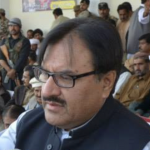
Pakistan: Decolonization, Depoliticization, And De-Radicalization As Only Path To Meaningful Education – OpEd
The education system vague in Pakistan since its creation is the continuation of the British colonial education system, which stems from the English Education Act 1835, a legislative Act based on Macaulay’s minutes. According to him, English education should be imparted instead of traditional Indian learning. He believed in education for a few upper and middle-class students and wished to create a class of Indians who were Indian in color and appearance but English in taste and affiliation rather than Indian by Blood & British by Taste. He wished to create a pool of Indians through his education system, capable of serving British interests and remaining loyal to them.
Here, I am writing only about the two key features of the Macaulay education system and its continuity in the country’s education system since its creation.
1) Focus on the English Language: The system emphasized English as the medium of instruction promoting Western literature which has proved main barrier and detrimental in acquiring education and learning outcomes, which spawned generations in the United India and now in Pakistan. Out of this system, a class grew up and has been growing since 1947 with a sense of inferiority about their own culture, language, and traditions. The net outcome of this flawed education system is the promotion of memorization, rote learning, production of zombies and parrots rather than producing critical thinking or creative minds.
2) Formation of an Educated Elite: The second most harmful intention of the Macaulay education system was to produce a small elite class that could serve in administrative roles and facilitate British governance rather than providing widespread education for the masses. It did lead to increased literacy among small segments of society and the emergence of a new educated middle class, which contributed to a disconnect from Indigenous needs, knowledge, and cultural practices, resulting in long-range destruction like the socio-cultural divide between those educated in English and those who continued to get education in government education institutions.
What we did in Pakistan further deepened that divide by continuing and adding four types of education: English medium / Urdu medium, public /private, and Madrasah, followed by highly politicized and radicalized education systems. This system persists from 1947 to this day, contributing to socio-economic inequalities and ideological differences, which resulted in political instability, economic meltdown, and sentiments of deprivation and exclusion in the public due to the loss of their identities, indigenous languages, and literature.
In a nutshell, the adoption of the Macaulay system of education promoted a colonial mindset and created a distinct elite class Consisting of mainly civil bureaucracy, political and business classes in the country- Pakistani by blood, color, and appearance but English in taste and affiliation, to serve the political masters and protect their interests rather than delivering service to the public. They neglected the educational needs of the population at large. Such legacy continues to influence the Pakistan education system since its creation till date.
This distinct class consisting of political elites and civil bureaucracy, with a colonial mindset, over some time, ruined all the government-run institutions, introducing bad governance, plundering the national exchequer, making properties abroad, and giving a debt-ridden economy to the country.
Ironically, this class, occupying 80% of seats in the country’s parliament, graduated from highly expensive private education institutions like Hihyson Lahore, public school Karachi, GC college or grammar school Lahore, etc, but they are subservient to the middle-class graduate from Kakol Academy Abott Abad, a mid-level military institution.
Results of the Flawed / Inherited Education System
It took Pakistan 62 years to incorporate the right of free and compulsory education into its constitution with the enactment of Article 25-A in 2010, guaranteeing free and compulsory education as a fundamental right of all children and placing the responsibility of its provision on the ‘state in line with 1948, UN declaration of free and compulsory education a fundamental human right through Article 26 of the Universal Declaration of Human Rights.
However, 13 years after its passage, this legislation remains a pipe dream for the common man and remains largely ineffective due to government inaction resultantly Over 26 million children aged five to sixteen years are still out of school, including 20 million who had never stepped inside a classroom particularly, 12.5 million Girls are out of school in the country. Those who do attend school mostly do not learn the skills required in the 21st century.
Further education has never been a priority in the corridors of power dominated by the ruling class. Therefore, Pakistan is spending- only 2% of its GDP on education, less than the regional countries, India spends 4.6 %, Bhutan 7%, and even war-torn Afghanistan spends 2.9 of its GDP, more than Pakistan. Meanwhile, Pakistan’s 220 universities’ education budget is below 2%, falling short of global Sustainable Development.
Furthermore, the situation in Balochistan is worse than that of the other federating units. Education has never been a priority of the past and present government. The chronology of education ministers shows that the ministers in charge of education needed education themselves. Therefore, the state of education in the province is home to the worst indicators, with a whopping 81 percent of girls having failed to complete primary school; the figure for boys is 52 percent. In addition, 75 percent of girls had never set foot inside a classroom as compared to 40 percent of boys. According to a study by UNESCO, in 2022, the female literacy rate is just 36.8% in Baluchistan.
The provincial government has turned back to meet the demand for missing facilities due to a lack of commitment and financial resources. More than 3200 schools are non-functional due to a shortage of about 2500 teachers, and the teachers already engaged in teaching have received no professional training in content knowledge and pedagogical skills because of a lack of budgetary allocation.
In terms of cost and benefit analysis, both federal and provincial governments together spend about Rs1,000 billion on education annually. That’s almost twice the cost of running the civilian federal government and by far the biggest item after defense and debt-servicing. And that’s just public-sector spending; Private spending is more than this number. And what do we get from all this money? Nothing. The nation has neither produced good leadership to lead the country on a stable and prosperous path, nor the flawed education system given brilliant scientists, economists, strategists, sociologists, or judicial minds to the nation over 77 years.
Despite tyranny, defunding of and discrimination in the education sector, outdated curricula, and a lack of emphasis on skill and professional interdisciplinary learning, coupled with poor governance, rampant corruption, a complete disregard for merit, and a lack of accountability for outcomes, are the permanent fit falls in the system. Consequently, Pakistan’s education system and the outcomes it produces are among the worst in the world.
This is largely due to the politicization of education and the over-inducing of ideology in the curricula during Ayub’s and Zia’s martial laws, particularly after the introduction of a Single National Curriculum by the Imran khan regime. We are inculcating in the young minds through textbooks a deliberate propagation of rigid ideologies, creating fake identities and false narratives of one nationhood, opposite to diversity and heterogeneous society. For the last seventy-seven years, we utterly failed to create a nation through textbooks based on rhetoric and teaching young minds false and fabricated history. Rather than letting children learn from our historical mistakes, we are doomed to repeat these mistakes. Consequently, the society has become fragmented, disintegrated, and more poisonous.
It seems that political parties and their governments, irrespective of military or civil, in the past and present, have much in common, they are united in quite a lot, including their efforts to assert control over the education system. The most recent example is the Sindh government passing a law that would allow bureaucrats — in addition to academics — to be appointed vice-chancellors (VCs) of universities. Similarly, in Khyber Pashtoonkhawa, the government also took advantage of its numbers in the assembly and amended the law to give the chief minister the power to appoint VCs. Baluchistan government has already done it in the same way. The Punjab government is planning to flex its muscles similarly and centralize the education sector, making the chief minister and ministers the head of the syndicates governing higher education institutes and removing the VCs from the chairmanship.
This inherited and deficient education system is a major reason for substandard human capital in the country, which is the biggest impediment to the country’s political stability, social and judicial harmony, and economic progress. Although these issues have been well-known and recognized by the country’s so-called leadership for decades, unfortunately, the ruling elite class has not been serious about addressing these structural weaknesses in the governance and management of flawed Macaulay’s education system, which has resulted in the death of (DEI), diversity, equity and inclusiveness in the country’s overall governance system.
What to Do for Meaningful Changes in the Education Sector
Our inherited flawed colonial education system needs decolonization on war putting. It requires complete overhauling by introducing drastic structural reforms at the policy level. Pakistan needs a rational, inclusive, harmonious SES (Single Education System) rather than an irrational, exclusive, and radical SNC ( Single National Curriculum).
It can be done by taking extraordinary measures coupled with an increase in the allocation of up to 4% of GDP recommended by UNESCO. Indigenous rational policymaking would entail a stable, long-term vision for education. It could be designed and developed in consultation with those who are highly professional and directly involved in the field of education with complete consent of all federating units in line with the 18th Amendment.
The drastic structural reforms include Decolonisation, Depoliticisation, and de-radicalization of education both at federal and provincial levels, coupled with the Establishment of independent Provincial education commissions free from political interference in all four provinces in line With the 18th Amendment.
Reform At the policy level includes! Introduction of IT, AI, a departure from blackboards to keyboards, Teachers training and capacity building of management cadre, Indigenous and consensus-based Curriculum reforms, ending language tyranny of English as a medium of instruction and introduction of Indigenous languages as medium of instruction at least to secondary level, adoption of best international practices from primary to a higher level and linking of higher education with the market. Regulation and monitoring of the private education sector. Provision of missing facilities, Establishment of new and up-gradation of existing schools. Timely and merit-based recruitment of teachers against the vacant positions both at the federal and provincial levels.
To ensure inclusive and equitable quality education in the country, We should advocate for the education system to be restructured to educate and serve the common man instead of one percent of the elite class. We need schools and universities to be authentic learning and research spaces and not instruments of coercion and indoctrination or incubators of deceptive ideologies.
Last but not least, declaring an education emergency for a period of five years to shoulder the structural reforms agenda in education, implementation of the 18th amendments in its true spirit and Article 25 (A), providing free and compulsory education to all children of the age of five to sixteen years, including taking effective measures to ensure meeting the targets set by SDG 4, of Sustainable Development Goals

Sher Khan Bazai is a retired civil servant, and a former Secretary of Education in Balochistan, Pakistan. He can be reached at skbazai@hotmail.com.

